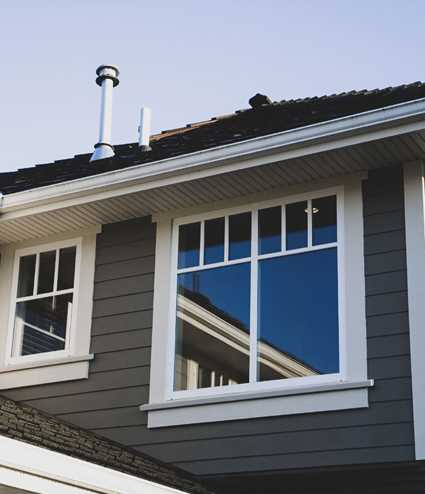Sliding doors are a popular choice for many homes, providing easy access to outdoor spaces and allowing natural light to flood in. However, like any other part of your home, they can encounter issues over time. If you find yourself struggling with a sliding door that won’t open or close properly, you might be wondering if it can be repaired – or if it needs a full replacement.
This article will explore common problems associated with sliding doors, how to determine if they can be fixed, and when it might be time to consider a replacement.
Common Problems with Sliding Doors
Before diving into repair options, it’s important to understand the typical issues that can arise with sliding doors. These problems can range from minor inconveniences to major malfunctions, and identifying the specific issue is the first step toward finding a solution.
1. Misalignment
One of the most common issues with sliding doors is misalignment. Over time, the tracks that the door slides on can become bent or obstructed, causing the door to stick or not close completely. Misalignment can also occur due to shifting foundations or improper installation.
To check for misalignment, observe the door as it slides. If it appears to wobble or if there are gaps between the door and the frame, misalignment is likely the culprit. This issue can often be resolved by adjusting the rollers or realigning the track.
2. Worn Rollers
The rollers on a sliding door are crucial for smooth operation. If these rollers become worn or damaged, the door may become difficult to open or close. Signs of worn rollers include squeaking noises, difficulty sliding, or a door that gets stuck.
Replacing rollers is a relatively straightforward process, but it does require some disassembly of the door. If you’re comfortable with basic DIY tasks, this can be a manageable repair. However, if you’re unsure, seeking professional help may be the best option.
3. Damaged Tracks
Another common issue with sliding doors is damage to the tracks themselves. Tracks can become bent or filled with debris, making it impossible for the door to slide smoothly. In some cases, a thorough cleaning may solve the problem, but in more severe cases, the track may need to be replaced entirely.
Inspect the tracks for any visible damage or obstruction. If the track is bent, it may be possible to straighten it out, but if it’s cracked or severely damaged, replacement is likely necessary.
Assessing the Damage
Once you’ve identified the potential issues with your sliding door, the next step is to assess the extent of the damage. This assessment will help you determine whether a repair is feasible or if a replacement is a better option.
Visual Inspection
Start with a thorough visual inspection of the door and its components. Look for signs of wear and tear, such as scratches, dents, or rust. Pay close attention to the rollers, tracks, and frame. If you notice any significant damage, it may be a sign that repair is not possible.
Additionally, check for any gaps between the door and the frame, as this can indicate misalignment or damage that may need to be addressed. Take note of any issues you find, as this information will be helpful if you consult a professional.
Functional Testing
Next, perform a functional test of the sliding door. Open and close the door several times to gauge its performance. Listen for any unusual noises, such as grinding or squeaking, which can indicate underlying issues. If the door sticks or requires excessive force to move, it’s a clear sign that something is wrong.
During this testing phase, also observe how the door sits in its frame. A properly functioning sliding door should fit snugly without gaps. If it appears to be sagging or misaligned, further investigation is warranted.
Consulting a Professional
If your inspection and testing reveal significant issues, it may be time to consult a professional. A trained technician can provide a more in-depth assessment and recommend the best course of action. They can also identify any underlying problems that may not be immediately visible.
While it may be tempting to attempt repairs on your own, enlisting the help of a professional can save time and prevent further damage. They have the tools and expertise necessary to address complex issues effectively.
Repair Options for Sliding Doors
If you’ve determined that your sliding door can be repaired, there are several options available depending on the specific issue at hand. Each repair method varies in complexity and cost, so it’s important to choose the one that best suits your situation.
1. Adjusting Rollers
For doors that are misaligned or difficult to slide, adjusting the rollers is often the first step. Most sliding doors have adjustable rollers that can be raised or lowered to ensure proper alignment. This process typically involves removing the door from its track, making the necessary adjustments, and then replacing the door.
Before making adjustments, it’s a good idea to clean the tracks to remove any debris that may be causing issues. After adjusting the rollers, test the door to ensure it slides smoothly.
2. Replacing Rollers
If adjusting the rollers doesn’t resolve the issue, it may be necessary to replace them entirely. This process involves removing the door from its track, taking out the old rollers, and installing new ones. Replacement rollers can usually be purchased at home improvement stores or online.
When selecting new rollers, ensure they are compatible with your specific door model. After installation, test the door again to confirm that it operates smoothly.
3. Repairing or Replacing Tracks
In cases where the tracks are damaged, you may need to repair or replace them. Minor bends can sometimes be straightened out with the right tools, but if the track is cracked or severely damaged, replacement is the best option.
Replacing tracks typically requires removing the door and the old track, then installing the new track in its place. This can be a more complex repair, so if you’re not comfortable with it, hiring a professional is advisable.
When to Consider Replacement
While many sliding door issues can be repaired, there are instances where replacement is the more practical option. Understanding when to make this decision can save time and money in the long run.
1. Extensive Damage
If the sliding door has extensive damage, such as a cracked frame, shattered glass, or severe structural issues, replacement may be necessary. Repairing such damage can often be more costly than simply installing a new door.
Additionally, if the door is old and has already undergone multiple repairs, it may be more beneficial to invest in a new, energy-efficient model rather than continuing to patch up an aging door.
2. Security Concerns
Security is a critical factor when it comes to sliding doors. If the locking mechanism is compromised or if the door itself is weak, it may pose a security risk. In such cases, replacing the door with a more secure option may be the best course of action.
Modern sliding doors often come with enhanced security features, such as multi-point locking systems, which can provide greater peace of mind for homeowners.
3. Energy Efficiency
Older sliding doors may not be energy efficient, leading to increased heating and cooling costs. If drafts are noticeable or if the door is single-pane glass, it might be time to consider a replacement. Newer models are often designed with energy efficiency in mind, featuring double or triple glazing and better insulation.
Investing in an energy-efficient sliding door can lead to long-term savings on energy bills, making it a worthwhile consideration for homeowners.
Cost Considerations
When deciding whether to repair or replace a sliding door, cost is a significant factor. Understanding the potential expenses involved can help homeowners make informed decisions.
1. Repair Costs
Repair costs can vary widely depending on the specific issue and the materials needed. Simple adjustments or roller replacements may only cost a few dollars for parts, while more extensive repairs, such as track replacement, can run into the hundreds.
It’s essential to obtain quotes from professionals if you’re considering hiring someone for repairs. This will give you a clearer picture of the potential costs involved and help you weigh the options.
2. Replacement Costs
Replacement costs for sliding doors can also vary significantly based on the type of door, materials, and installation fees. Basic sliding doors can start at a few hundred dollars, while high-end models with custom features can exceed several thousand.
When budgeting for a replacement, consider not only the cost of the door itself but also any installation fees and potential modifications needed for the existing frame. It’s wise to shop around and compare prices from different suppliers and contractors.
3. Long-term Savings
While the initial cost of replacement may be higher than a simple repair, it’s important to consider long-term savings. New doors can offer better energy efficiency, improved security, and reduced maintenance costs. Over time, these factors can offset the initial investment, making a replacement a more economical choice in the long run.
Sliding Door Repair and Replacement in Omaha
While many sliding door issues can be resolved with simple repairs, there are times when replacement is the more practical choice. By considering factors such as damage extent, security, energy efficiency, and cost, homeowners can ensure they make the best decision for their needs.
If your sliding glass door isn’t operating properly, contact the experts at Thermal King today for a free evaluation.




